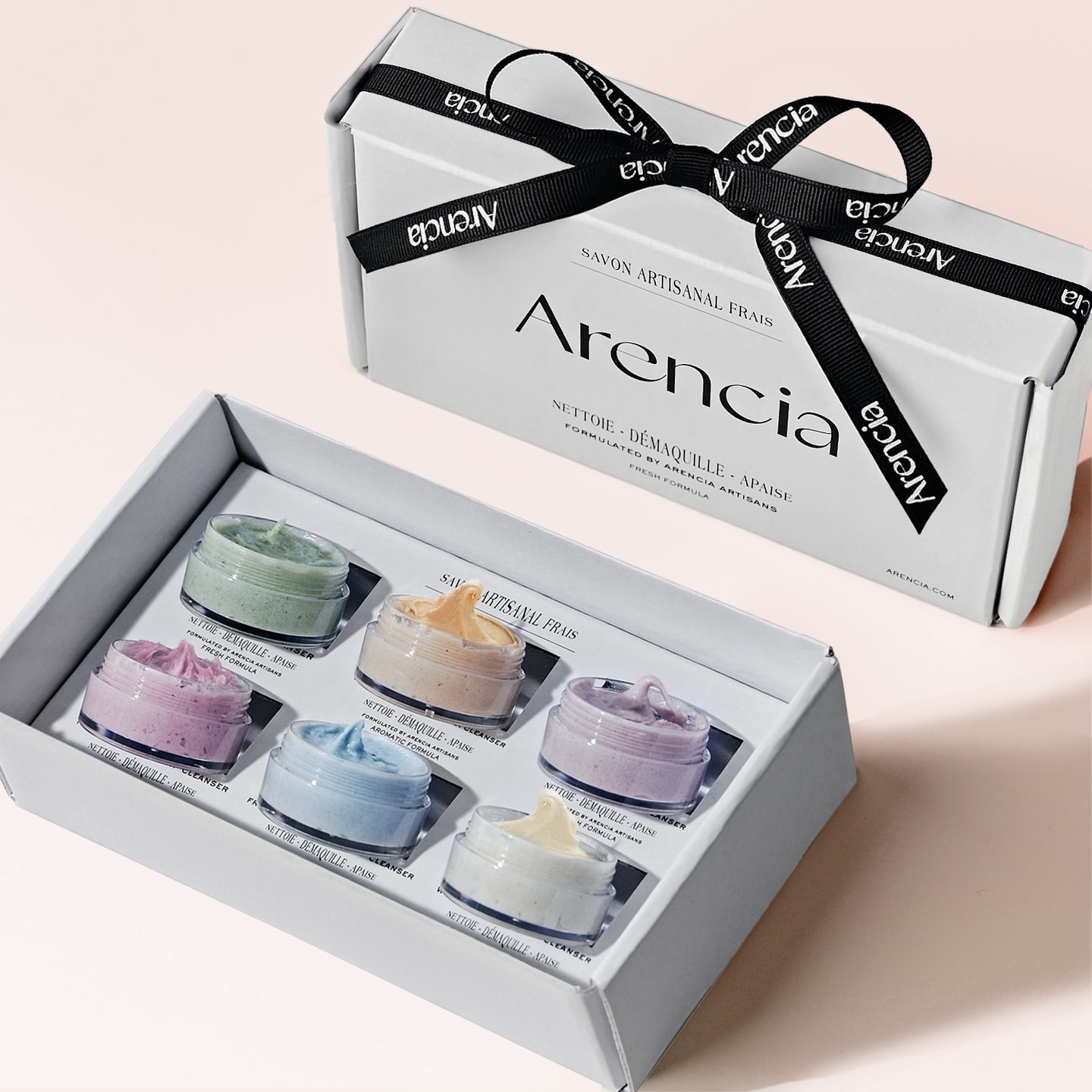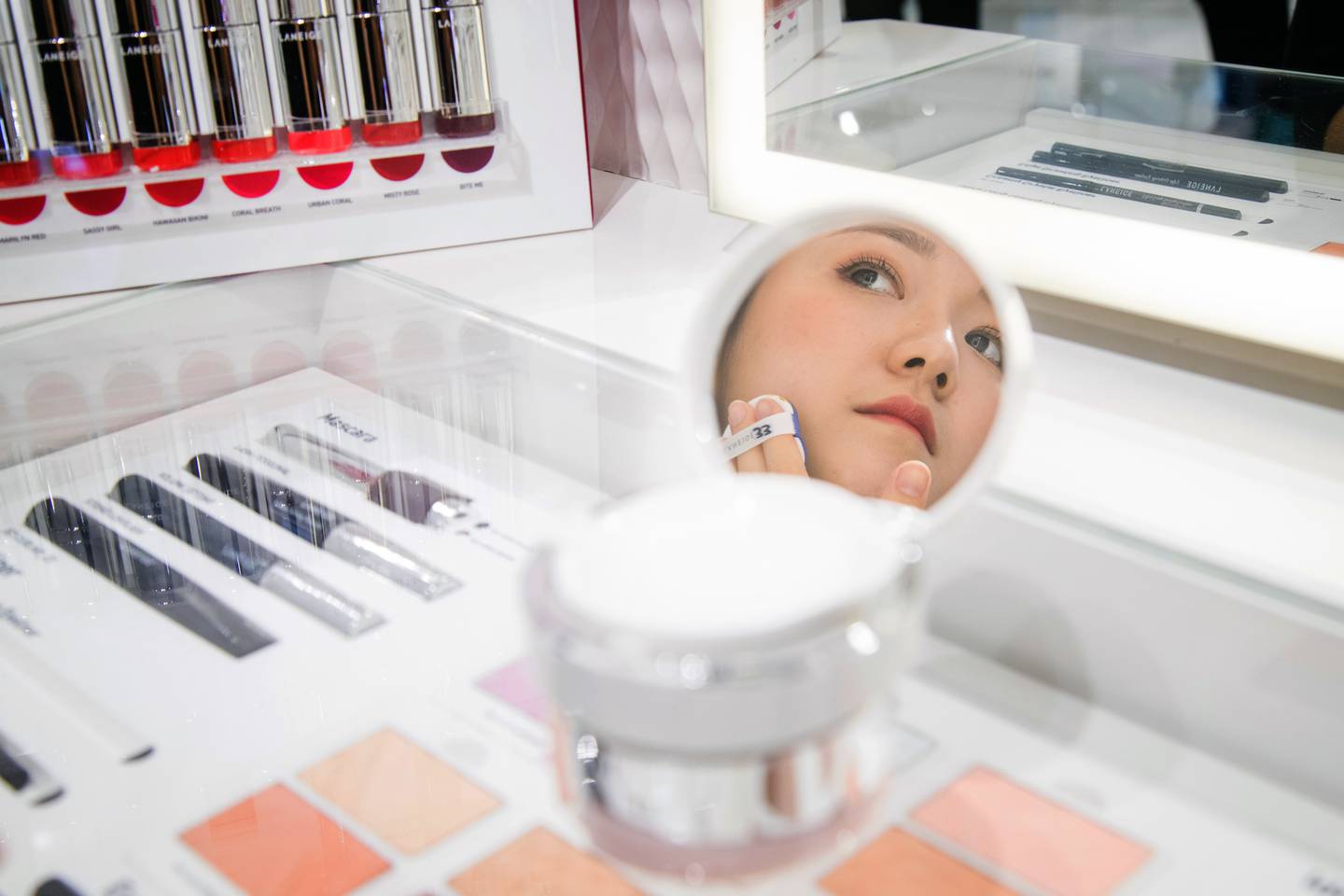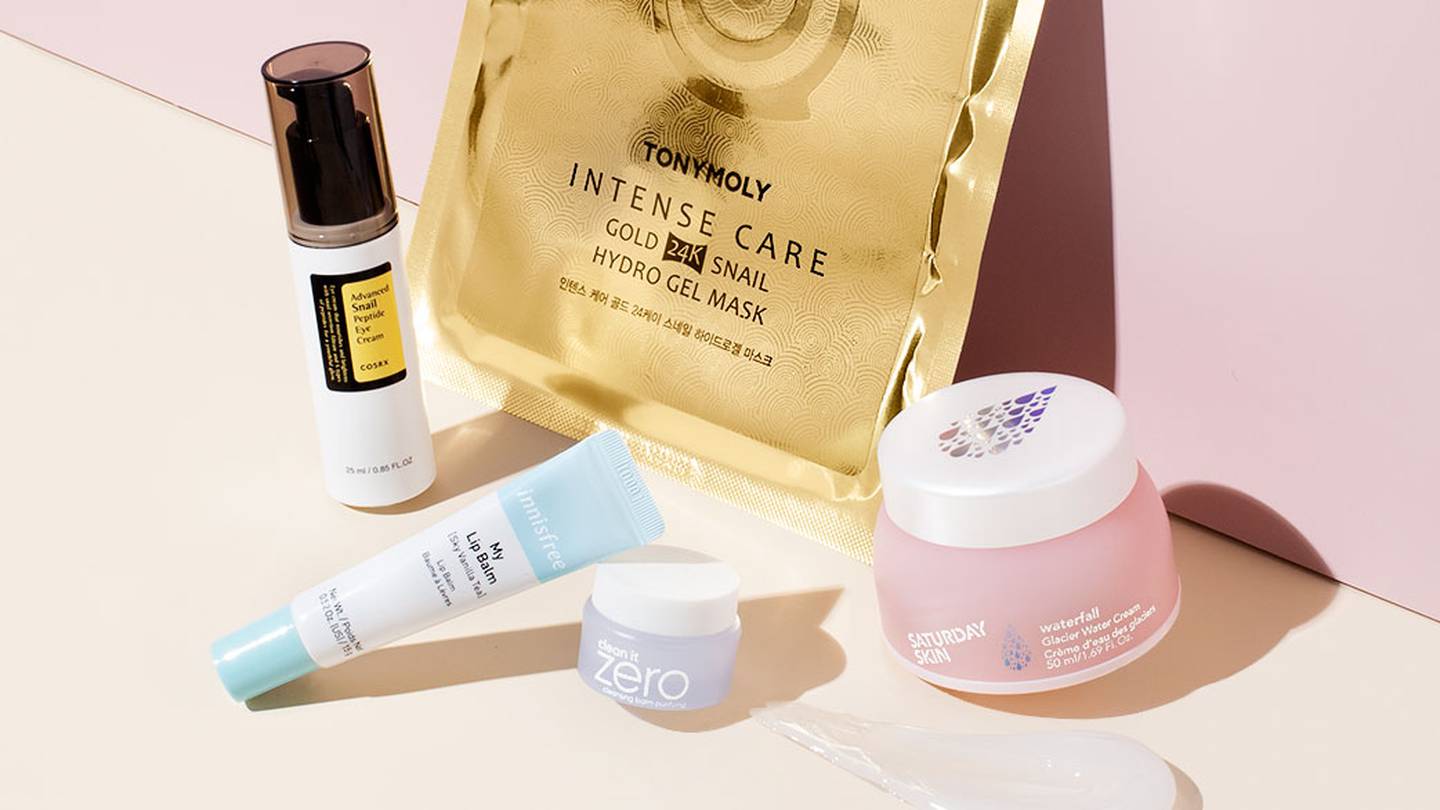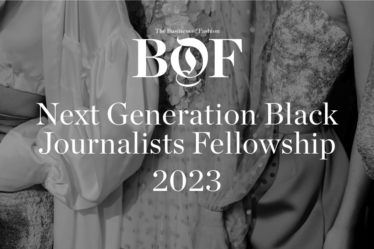
When Joohyun Lim moved back to Seoul in 2014 after living overseas, veganism had yet to hit its stride in the K-beauty space. South Korean beauty exports were still famous for 10-step skin care routines and single-use sheet masks rather than products that aligned with her plant-based lifestyle and the bourgeoning ‘clean beauty’ movement.
Forced to take extra care with the food she ate and the creams she used on her sensitive skin, Lim went on to make beauty products for herself before officially launching the brand Arencia five years later. Her range of vegan, cruelty-free and often plastic-free shampoo bars, soaps and body oils came on the market just before the pandemic.
Riding the subsequent wave of interest in beauty products claiming to contain safe, natural, organic or eco-friendly ingredients, Arencia started selling on Korean mass market platforms like Kakao, Naver, Musinsa and 29cm. Beyond Korea’s borders, however, the understated brand was just one of many in an increasingly crowded market.
Instead of expanding first to another country in Asia, where demand for plant-based beauty is still relatively nascent, Lim launched in the US last year to cater to a much larger audience. But complications soon arose when she discovered that the playbook she developed for Korea was different to the one she needed in the west.
In Korea, Arencia is positioned as a mid- to high-end brand, with products selling for 30 to 40 percent more than the average plant-based beauty business for a customer in their 20s. But in the US, which now makes up around 30 percent of the brand’s sales mostly through Amazon, a more mature market for plant-based goods means many of her customers are in their late 30s and prioritise value for money.
How do Korean brands like Arencia — and their international retail and marketing partners — navigate this apparent disconnect?
Korean Brands vs K-beauty
Years after K-beauty took the world by storm and found an enthusiastic global audience, Korea’s innovative skin care and make-up techniques continue to shape the global beauty industry. By 2020, Korea had risen to third place after France and the US in a ranking of the value of cosmetics exports by country, according to a report in the Korea Herald.
Korean brands like Sulwhasoo, Hera, Laneige and Tonymoly can now be found on physical and digital shelves at Sephora, Bergdorf Goodman and Amazon in the US, and Selfridges and Boots in the UK, to name a few. Many are large companies or brands in a big conglomerate that took a westward pivot to mitigate against an overreliance on the China market. Some have found success abroad; others are starting to struggle.

Arencia is unusual in that few other indie brands have made inroads overseas. Founders say they simply can’t afford to take their eyes off the fast-paced, cut-throat domestic market.
It’s a reality well captured in a TikTok video, where an American user on a shopping trip to Seoul remarked that the K-beauty products going “viral” in the US (like Laneige’s lip mask and Beauty of Joseon’s sunscreen) are just drops in the ocean compared to the vast array of local brands and products available in Korean beauty retailers like Olive Young.
While K-beauty’s meteoric growth phase may be ending, the country’s status as a global trend leader persists thanks to the power of local groups like Amorepacific and LG Household & Health Care (LG H&H), the ‘Hallyu’ cultural wave featuring K-pop music and the growing popularity of Korean celebrities as global fashion brand ambassadors. The problem for Korean beauty brands operating outside this universe is that such reference points are often the only ones that international customers have.
Herein lies the dilemma facing brands like Arencia that don’t fit neatly into those narrow definitions of K-beauty: first, Korean products seen as a success story in markets like the US often trade on hype rather than longevity; second, some founders don’t want to be associated with the high-octane image that western consumers expect from brands marketed as K-beauty.
Meanwhile, back in Korea’s domestic beauty market, competition is even fiercer now than it was before the pandemic. “You’ll see 10 success stories,” said Arencia’s Lim, “but not the thousands and thousands of brands that launched and failed.”
While it’s true that “the [beauty] rituals and everyday routines of Korean people are quite different from shoppers in other countries,” the bigger challenge for Korean brands looking to export is that “trends come and go really fast in Korea, [which means that when brands] launch a brand-new product here, it can fail to sell in other markets” because the product is either too advanced or too specific to cross-over, suggests Elle Korea’s beauty director Younji Jung.
This explains why Lim knows of several Korean brand owners producing locally who skip the domestic market altogether and sell instead to countries like Indonesia, where demand for K-beauty is high. Southeast Asian markets are often easier to navigate than China and can prove to have more market similarities than with the US.
China was nevertheless the biggest importer of Korean cosmetic products as late as 2020, followed by the US and Japan, according to data released by the South Korean Ministry of Food and Drug Safety. Significant growth markets for exporters of Korean cosmetics include Vietnam, Indonesia and Kazakhstan alongside Australia, Canada, the UK and Russia. There are also reports of demand for K-beauty growing in the Middle East.
Unlocking New Categories
It’s not only in the so-called ‘clean beauty’ segment that niche Korean brands are launching. Underdeveloped categories across the board have gained favour as a natural result of oversaturated segments in skin care and make-up, says Jung. It helps that categories like body lotion and shampoo are typically less risky to produce than face creams and serums.
One company carving out a niche is Kouve, which sells nail polishes and Instagram-friendly soft gel adhesives. The brand launched in 2022, after the pandemic strengthened demand for at-home nail products yielding salon-like results, says former chief executive Sangvin Lee.
Korea’s DIY nail market was small at the time and Kouve had few competitors, but that pushed Lee to take the brand to neighbouring markets like Japan, Hong Kong, Singapore and Taiwan.
Lee recalls that while Japanese brands had a big influence on Korean trends in the 90s and 2000s, the tables have since turned for some products thanks to Hallyu and the added value of the K-beauty moniker for certain products. Beneficiaries include Kouve, which through Nugu — an e-commerce platform for Japanese shoppers specialising in products based on Korean trends — is working to tap into the larger nail care market next door.

The growing nichification trend in Korea also signals a departure from beauty business models that relied on keywords and prescriptive routines to oversimplify shoppers’ diverse needs. “We’re accepting and getting used to the [mindset] that everyone is different, and everyone has their own traits,” Jung explained.
And despite the sophistication of branding, packaging and visual identity in Korea — and local shoppers’ famously high standards — things had started to become homogeneous across skin care and make-up. “If I erased brands’ names, you wouldn’t be able to tell which is which,” said Jung, adding that there is more room for creativity and subtlety when branding lifestyle-adjacent categories like fragrance and body care.
This dovetails with a shift away from celebrity endorsements being a default, which Jung is firmly in favour of because “every [celebrity image] in terms of make-up, pose and concept used to be so similar”, and because many up-and-coming brands don’t have the resources to tap top talent.
Not only did major ambassador deals drain budgets and encourage companies to abide by a well-trodden marketing playbook, but stars also hopped from one brand to another once contracts ended, diminishing brand identity in the process.
“Yet there are still brands that do it, and still suffer,” said Arencia’s Lim. “I’d estimate that brands spend around 30, 40 percent of profits on branding, but it could easily go up to 50, 60 percent.”
Across both newer and established categories, eco-consciousness is fast becoming “the most important factor” shaping the Korean industry in the wake of the pandemic, said Hwa Jun Lee, Mintel’s Seoul-based senior beauty and personal care analyst.
Greater demand for responsible business practices is being driven by Gen-Z, but not everyone believes it is the deciding factor for these or other consumer cohorts in the country. “I do think that for people living in the [Korean] capital, a brand being eco-friendly is a key factor when they’re deciding to purchase an item,” said Lim. “I don’t think it’s the first or second reason, but it could be the third or fourth.”
Indie Uprising
The rise of independent brands is arguably the greatest shift the Korean beauty industry has seen in recent years. The closure of offline stores during the pandemic — including major touchpoints for visiting Chinese, like department stores and duty-free outlets — helped level the playing field for smaller and digital native indie players.
Brands from Amorepacific and LG H&H groups were already feeling the heat, having in some cases overextended their physical footprints in mainland China, where complex geopolitics and controversies led to boycotts and strengthened demand for Chinese alternatives to Korean brands.

But insiders suggest that even Korean indie brands with high-growth potential can fall prey to short life cycles or attract the wrong kind of attention.
“Once you make a product, take photos and launch it online, other brands take notice and do something similar,” says Lim. “It saturates the market, so you have to move on to the next chapter really fast.”
Much of the time, bigger and better-funded companies are also watching. It’s common practice for Korean conglomerates to acquire indie brands as a way of catching up with demand in that niche — or launch a similar brand, if their offers are turned down. Lim says that she has already received three acquisition offers since Arencia launched in 2019.
This climate encourages entrepreneurs to quickly inflate and sell their brands, rather than run and own them for the long-haul. “You either exit [through a sale] or die off, and [very few indie brands] make it to the end,” said Lim.
For those that do and decide to take the plunge abroad, there is enough mileage left in the K-beauty moniker for some to find success in individual products. But to make a more holistic international breakthrough, Korean brands will need to start transcending consumer expectations without alienating too many customers with a pre-existing interest in all things Korean.



